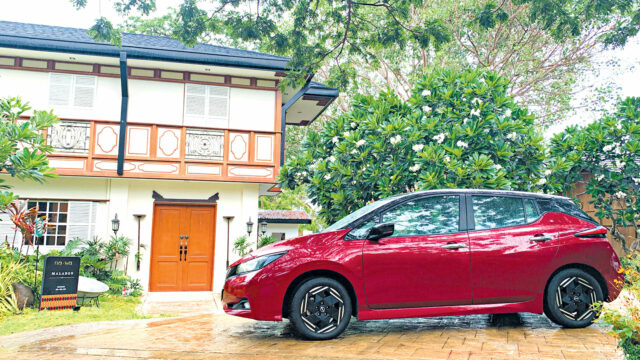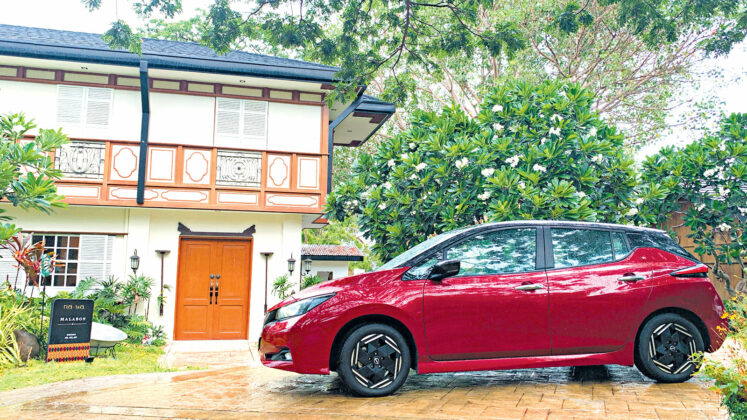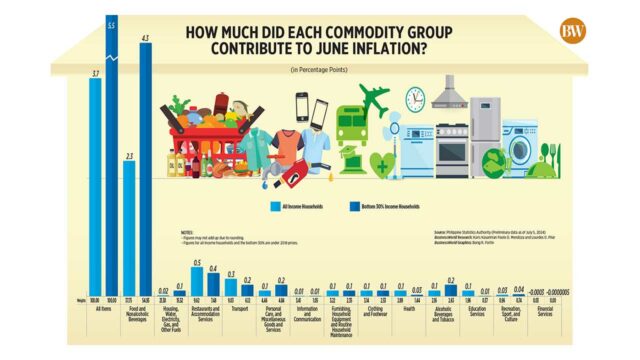Was it a joke for comic relief, or was it a truly desperate grasping for the right words on an impassioned plea for understanding and consideration at a videoed high-level government committee meeting investigating accusations raised on human rights transgressions?
Serious matters are not joked about. A clasping for the proper and exact translation to English describes the worrisome suspicion: are Filipinos losing their proud and confident proficiency in the English language, a reputation long held since American rule from 1898-1946?
“How do you English this?” should be unheard of in what sociolinguistics would call the “diglossia” or bilingualism in a country raised on English as the dominant choice of formal communication for the past century and a quarter (125 years!) versus some 80-130 various regional dialects/languages including the national language, Filipino, which is mostly spoken in the Tagalog region (Metro Manila, the province of Rizal, and the Calabarzon region which is composed of the provinces of Cavite, Laguna, Batangas, and Quezon).
Of course, extreme nationalists might dislike the Americans for the “sin” of colonization, and protest rabidly against the continuing imposition of English as the formal language for communication and the medium of instruction in secondary and tertiary schools. The 1935 Philippine Constitution mandated that “Tagalog” (changed later to “Pilipino,” and now “Filipino”) is the national language. In 1940, Executive Order No. 263 ordered the teaching of the national language in all public and private schools in the country.
“The school system was reorganized when the Americans came to liberate the Philippines from the Japanese invasion. English, again, became the principal medium of instruction with Tagalog taught as a required subject in the elementary and secondary levels.
“In 1957 a new language policy was adopted in Philippine schools. The Board of National Education decided that the ‘medium of instruction in the first two grades of the elementary school shall be the local vernacular; that at the same time the national language shall be taught informally beginning in Grade I and given emphasis as a subject in the higher grades; that English shall be taught as a subject in Grades I and II and used as a medium of instruction beginning in Grade III.’
“This revised Educational Program of 1957 was criticized strongly due to the observed weakness of the multilingual policy which it promoted” (web.stanford.edu).
But the bilingual method of instruction in schools continued —until the fall of the martial law dictator Ferdinand E. Marcos, Sr. in the EDSA People Power Revolution of February 1986. An explosion of extreme nationalism brought the 1987 Constitution which reaffirmed the human rights and freedoms of the Filipino people that were curtailed in martial law. Love of country was most symbolized in the love of the “Inang Wika” (Mother Tongue), Filipino. “For the purposes of communication and instruction, the official languages of the Philippines are Filipino, and until otherwise provided by the law, English…” In 1990, a Congressional Commission was created to survey Philippine education. The EDCOM recommended the use of Filipino as the language of instruction at all levels by the year 2000.
Purists in academe added chaos to chaos as all scrambled to find translations of technical and even ordinary words in English or the regional vernacular to Filipino. The Filipino language should have no “recall” to Spanish, English, or other dialect. Absurd translations like “salum-puwet” were invented to replace the long-used “silya” (silla in Spanish) which meant “chair.” At the tertiary and post-graduate levels, technical papers were written in English, and translators hired if needed, for the final thesis or dissertation to be submitted in straight Filipino. How can, when there were sometimes no official Filipino words for certain basics, like for “community,” shunning “komunidad,” which is adopted from the Spanish?
In this discomfiture, formal education reverted to English. Instruction in the public-school primary and secondary levels became hybrid Filipino-English, with most starting to teach in English in Grade III, as in the old system.
“How do you English this?” became a pathetic cry of the younger generations who had lost the opportunity to be grilled in the English language in their formative years. “Taglish,” a creatively lax and “groovy” (fashionable and exciting) conjoining of English and Filipino within a sentence, or the sudden shift of English to Filipino and vice versa within a thought was permissible and accepted, from children and upward to adults and old people. Pure, grammatical English was generally overridden by the convenience of Taglish.
Alas, this cumbrous time in national sociolinguistics was also the era of liberalized global commerce and trade, and the stepping up of demand for goods and services from supplier nations. Particularly drawn into the boom and bounty were the small developing countries like the Philippines. The demand for overseas foreign labor was filled by at least 1 million overseas Filipino workers (OFWs) deployed or redeployed every year from 2006 through 2019, a figure that increased to an average of 1.9 million during the 2016-19 period. This figure dropped to 550,000 during the COVID-19 pandemic until more than 1.2 million OFWs were deployed in 2022 (migrationpolicy.org). According to the preliminary figures reported for 2023, the value of cash remittances sent to the Philippines by overseas workers reached approximately $33.5 billion (statista.com, April 19, 2024).
Guess what? A requirement for OFWs is that they are English-speaking. Thank God we still use English as the major language of instruction in our schools (Filipino is used from Kindergarten to Grade III in public schools; Most private schools use English throughout grades 1-12.)
More than 27.2 million students were enrolled in 2021, 23.9 million of whom were in public schools. An estimated 2 million students aged 16 to 18 were not attending school as of 2023. As of 2023, there were 327,851 school buildings in the country, 104,536 of which are in good condition. The 2019 National School Building Inventory reported a shortage of 167,901 classrooms in the country. The Senate Committee on basic education estimates that P420 billion is needed to build classrooms for the country’s education system. (Philippine Star. Jan. 31, 2023).
The approved budget for the Department of Education in 2024 is P715,294,186,000. The original proposal under Vice-President Sara Duterte who was then also the Education secretary, was P924.7 billion, which included a P150-million confidential fund, aside from confidential and intelligence funds amounting to P500 million for the Office of the Vice-President in 2024. Both confidential funds were disapproved by Congress, “following the controversy about the P125 million in secret funds it spent in 11 days in 2022,” (politico.com.ph, June 29, 2024).
President Ferdinand R. Marcos, Jr. named Senator Juan Edgardo “Sonny” Angara as the new secretary of the Department of Education, effective July 19. Mr. Angara, whose Senate term was supposed to end in 2025, will replace Ms. Duterte, who resigned as education chief on June 19. Mr. Angara vowed to coordinate with his predecessor for guidance in managing the department, and bared his priorities which include the streamlining of the curriculum of basic education. “I think that’s the right direction. I think the program started at certain grade levels. Good programs will be continued. There are ongoing reviews of existing programs started by the Vice-President, so whatever the results of those reviews, we will adopt the recommendation,” Mr. Angara said (philstar.com, July 4, 2024).
Sonny Angara has more concerns than money at the department. He must improve the quality and delivery of education in the country. Critical to this is the review of the “Return to K-10” bill of former President now Senior Deputy Speaker and Pampanga Rep. Gloria Macapagal Arroyo, which seeks to return the basic education system to its previous K-10 setup, with students considered as high school graduates after completing kindergarten, six years of elementary school, and four years of secondary school. Grades 11 and 12, currently known as senior high school (SHS), would be required only for those pursuing a college degree. Ms. Duterte endorsed this and prepared for its implementation in 2024.
But the K-10 program was already deemed inadequate and ineffective by previous Education department heads before Ms. Duterte. The improvement, the K-12 program, launched and implemented in the term of President Benigno Simeon Aquino III and continued in President Rodrigo Duterte’s time, has not had time to take effect, having been deterred by the COVID-19 pandemic and the political tensions of two national elections.
The Organization for Economic Co-operation and Development (OECD) conducts the Programme for International Student Assessment (PISA) every three years to evaluate the knowledge and skills of 15-year-old students globally. Filipino students were still among the world’s weakest in math, reading, and science in the latest assessment, with the country ranking 77th out of 81 countries and performing worse than the global average in all categories.
“The weaknesses in our basic education system will eventually translate into the weakness of our workforce, affecting the productivity and key source of our economic growth and competitiveness,” Philippine Business for Education said in a statement following the PISA evaluation (BusinessWorld, Dec. 7, 2023).
“The state of education in the Philippines demands immediate attention, collective effort, and a commitment to improvement so we can give our children the best learning experience that they deserve.”
Amelia H. C. Ylagan is a doctor of Business Administration from the University of the Philippines.
ahcylagan@yahoo.com























